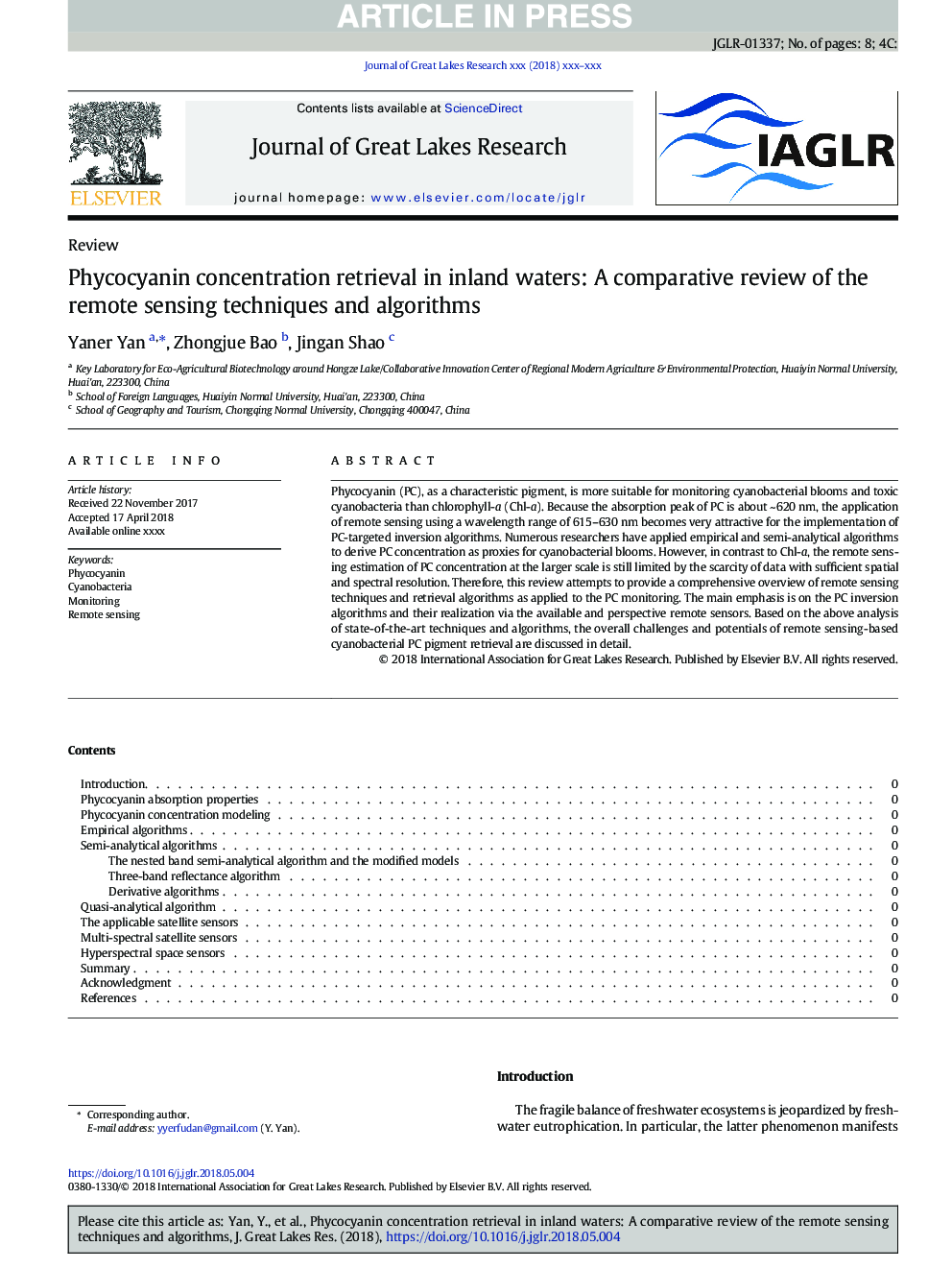| Article ID | Journal | Published Year | Pages | File Type |
|---|---|---|---|---|
| 8849085 | Journal of Great Lakes Research | 2018 | 8 Pages |
Abstract
Phycocyanin (PC), as a characteristic pigment, is more suitable for monitoring cyanobacterial blooms and toxic cyanobacteria than chlorophyll-a (Chl-a). Because the absorption peak of PC is about ~620â¯nm, the application of remote sensing using a wavelength range of 615-630â¯nm becomes very attractive for the implementation of PC-targeted inversion algorithms. Numerous researchers have applied empirical and semi-analytical algorithms to derive PC concentration as proxies for cyanobacterial blooms. However, in contrast to Chl-a, the remote sensing estimation of PC concentration at the larger scale is still limited by the scarcity of data with sufficient spatial and spectral resolution. Therefore, this review attempts to provide a comprehensive overview of remote sensing techniques and retrieval algorithms as applied to the PC monitoring. The main emphasis is on the PC inversion algorithms and their realization via the available and perspective remote sensors. Based on the above analysis of state-of-the-art techniques and algorithms, the overall challenges and potentials of remote sensing-based cyanobacterial PC pigment retrieval are discussed in detail.
Related Topics
Physical Sciences and Engineering
Earth and Planetary Sciences
Earth and Planetary Sciences (General)
Authors
Yaner Yan, Zhongjue Bao, Jingan Shao,
